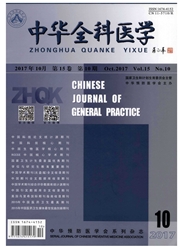

 中文摘要:
中文摘要:
目的 确定超声引导下罗哌卡因臂丛神经阻滞治疗肩周炎的量效关系。方法 选取拟在臂丛神经阻滞下行肩关节松解术患者100例,年龄43~71岁,病程2个月~5年。采用随机数字法分为5组(n=20):R1组~R5组。超声引导确定肌间沟臂丛神经根位置,分别注射罗哌卡因0.10%(R1组)、0.15%(R2组)、0.20%(R3组)、0.25%(R4组)、0.30%(R5组)、甲钴胺注射液0.5 mg、复方倍他米松1 ml和0.9%生理盐水的混合液共10 ml,注药后观察5组患者的麻醉起效时间、痛觉消失时间、镇痛持续时间、不良反应发生率、治疗前后脉搏血氧饱和度以及疗效评价,痛觉消失时间超过10 min为罗哌卡因臂丛神经阻滞阳性反应。采用probit概率单位法计算超声引导下罗哌卡因臂丛神经阻滞治疗肩周炎的半数有效剂量(ED50)、95%有效剂量(ED95)及95%可信区间(95%CI)。结果 5组患者随着罗哌卡因浓度梯度的增加,麻醉起效时间、痛觉消失时间缩短,镇痛持续时间延长,差异有统计学意义(P〈0.05);所有患者治疗后有效率(治愈~+好转)均为100%,无明显不良反应发生。超声引导下罗哌卡因臂丛神经阻滞治疗肩周炎的ED50(95%CI)为0.167%(0.153%~0.180%),ED95(95%CI)为0.217%(0.199%~0.251%)。结论 超声引导下罗哌卡因臂丛神经阻滞治疗肩周炎疗效确切,无明显不良反应,其ED50和ED95分别为0.167%和0.217%。
 英文摘要:
英文摘要:
Objective To determine the dose-response relationship of ropivaeaine for hrachial plexus block in frozen shoulder guided by ultrasound. Methods One hundred frozen patients, aged 43 - 71 years, duration of 2 months - 5 years, undergoing shoulder lysis under brachial plexus block guided by ultrasound, were randomly divided into 5 groups (n =20 each) using a random number table: group R1 -R5. Intersealene braehial plexus root positions were determined guided by ultrasound, mixing liquid 0.10% (group R1 ) ,0.15% (group R2 ),0.20% (group R3 ),0.25% (group R4 ), 0.30% ( group R5 ) ,meeobalamin injection 0.5 mg,betamethasone 1 rnl and 0.9% saline total 10 ml were injected into the braehial plexus around. The onset time of anesthesia, pain disappeared time, duration of analgesia, incidence of adverse reactions, before and after treatment pulse oximetry were recorded, and the treatment were evaluated. The response to ropi- vacaine for brachial plexus block was defined as positive when pain disappeared time was more than 10 rain. The ED50, ED95 and 95% confidence interval(CI) of ropivaeaine for braehial plexus block guided by ultrasound were calculated by probit analysis. Results The onset time of anesthesia and pain disappeared time shortened, duration of analgesia pro- longed, following ropivaeaine concentration gradient increasing, the difference was statistically significant( P 〈 0.05 ). The effective rate( cure and improvement) of the treatment was 100% , no significant adverse reactions occurred. The EDs0 and ED95 (95% CI) of ropivacaine for braehial plexus block guided by ultrasound were 0. 167% (0. 153% -0. 180% ) and 0.217% (0. 199% -0.251% ) ,respectively. Conclusion Ropivacaine for braehial plexus block guided by ultrasound is effective for frozen shoulder,with no significant adverse reactions. The ED50 and ED95 of ropivaeaine for braehial plexus block in frozen shoulder guided by ultrasound were 0. 167% and 0. 217% ,respectively.
 同期刊论文项目
同期刊论文项目
 同项目期刊论文
同项目期刊论文
 期刊信息
期刊信息
